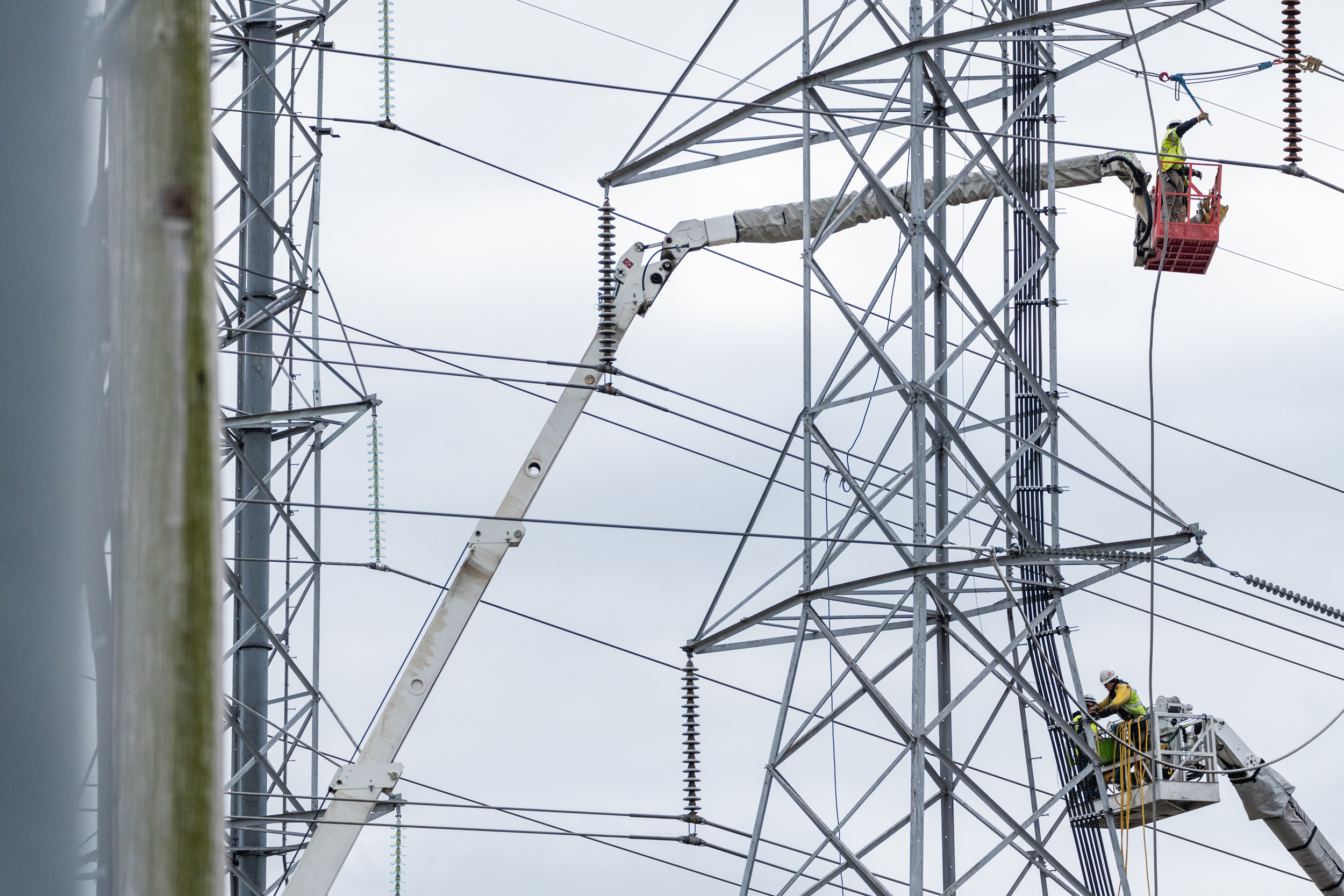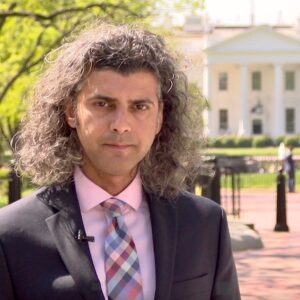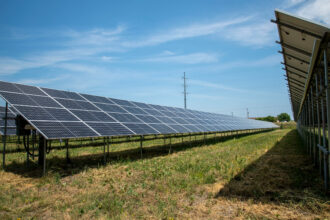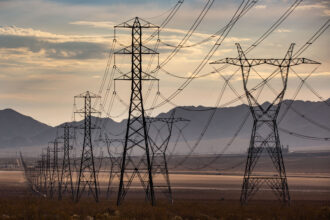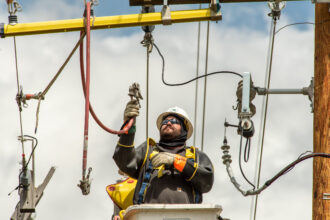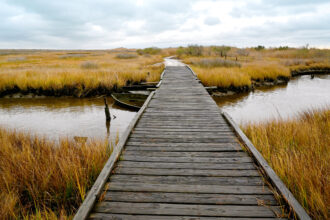A Baltimore coal-fired power plant will be operating past its planned retirement date next year, pumping out pollution, while the cheaper clean energy projects that could help replace it are stuck in a queue to connect to the region’s electric grid.
That’s the type of snarl a recent federal order aims to reduce by requiring regional grid operators to carry out long-term planning that accounts for states’ needs, including their clean-energy targets.
But elected officials and advocates in Maryland and the wider region fear their grid operator, PJM Interconnection, is in no hurry to comply. PJM requested a rehearing of the Federal Energy Regulatory Commission order in June, calling it “overly prescriptive in several areas.”
Maryland Gov. Wes Moore and governors of Pennsylvania, New Jersey and Illinois are among those pushing back, calling on PJM in June to speed up transmission expansion. On Monday the National Caucus of Environmental Legislators urged the grid operator to start that planning without delay.
“Maryland electric utility customers are now bearing huge costs resulting from the failure of PJM to plan the transmission system to meet customer needs,” said David Lapp, head of the Maryland Office of People’s Counsel, the state agency representing Maryland utility customers in federal and state rate cases. “The long-term regional transmission planning required under the rule should help remedy those failures.”
Clean-energy projects waiting to connect to the grid PJM runs are caught in a five- to six-year backlog, said Thomas Rutigliano, senior advocate for the Climate & Clean Energy Program at the Natural Resources Defense Council. New and expanded transmission lines would ease the bottleneck, he said, and FERC’s Order 1920 is designed to make that happen.
Maryland is among the states that have long argued that PJM should consider clean energy and growth targets when planning transmission upgrades. From power-hungry data centers to future electrification of buildings and transport, there’s plenty to plan for.
Utilities have an outsized say over transmission planning and dislike the FERC order, Inside Climate News reported earlier this year, because it allows entities other than shareholders to have a say in decision making. Proponents of the rule worried it would be delayed by challenges. PJM is one of two grid operators to request a rehearing.
“This decision risks further stalling progress on integrating renewable energy sources like wind and solar into our energy mix,” said Casey Weinstein of Ohio, among a group of state lawmakers who wrote to PJM urging compliance with the order.
In a statement to Inside Climate News, Weinstein said Ohioans deserve a grid that supports transition to cleaner energy and promotes economic growth. He urged PJM to address the utility-scale wind and solar projects stalled in its queue. “By implementing the transmission updates and consumer protections required by FERC’s order, we can ensure these projects deliver tangible benefits to Ohioans, enhancing our energy security and creating local jobs.”
Jeffrey Shields, a spokesperson for PJM, said the organization recently expressed its intent to immediately begin discussions with states. “PJM supports long-term planning and what FERC is trying to accomplish, and in fact has been working with states and stakeholders on what a long-term planning framework could look like even prior to Order 1920’s issuance,” Shields said in emailed comments.
PJM agrees that the rule will assist in long-term planning and more holistically assessing system needs, he added. The grid operator earlier said its rehearing request was about “seeking flexibility to implement its requirements in a less prescriptive way” and “to reflect its unique circumstances and regional needs.”
“PJM will continue to facilitate discussion with our states to advance long-term planning and Order 1920 compliance,” Shields said.
“There is no time to waste in planning for the transmission system to support our future energy needs.”
But elected officials say they want action, not discussion.
“As legislators from states in PJM’s service territory, we are writing to urge PJM to work without delay to implement the new FERC Order 1920 regarding transmission planning. We view this rule, and PJM’s effective implementation of it, as critical to our responsibility to ensure that our constituents have access to reliable, affordable, and clean electricity,” the National Caucus of Environmental Legislators, a nonpartisan network of lawmakers working on environmental issues, wrote in a July 15 letter to the grid operator’s board and top management.
PJM’s current transmission planning is inadequate, the NCEL letter added.
“There is no time to waste in planning for the transmission system to support our future energy needs,” the group said.
Maryland Del. Lorig Charkoudian, a Democrat from Montgomery County and one of the signatories to the NCEL letter, said FERC’s order directs grid operators to plan for different scenarios that can reliably bring clean energy projects online.
“There’s hundreds of gigawatts waiting in the queue to come online. But they’re all backed up because PJM doesn’t do long-term coordinated transmission planning that balances all of the various needs of states,” said Charkoudian, blaming some of the delay on fossil fuel interests and utilities that hold significant voting power within PJM.
“That’s why I’m also calling for changes within the PJM governance structure because presently we have outcomes that benefit fossil fuel [energy] generators and transmission owners that keep us from moving towards our clean energy and economic development goals,” she said.
Lapp, the Maryland people’s counsel, lamented that FERC’s rule came too late to avert one consequence of PJM’s failed transmission planning: Maryland customers are now on the hook to pay hundreds of millions of dollars to keep a coal plant—Brandon Shores—running longer than planned because a 2025 retirement could have caused grid reliability issues.
“For the Brandon Shores retirement, BGE is boosting its profits with a nearly $800 million investment for transmission without a competitive solicitation that could have saved customers tens if not hundreds of millions of dollars,” Lapp said. “In the meantime, while the transmission is being built to address Brandon Shores’ retirement, customers will have to pay to keep the coal plant running beyond its retirement date—again at additional costs of more than $215 million a year.”
Responding to the criticism, PJM’s Shields said the grid operator was not a party to the agreement to close the coal plant, and renewables alone will not make up for its eventual closure. “Significant investment in transmission must occur to keep the lights on for a significant portion of the State of Maryland,” he said.
About This Story
Perhaps you noticed: This story, like all the news we publish, is free to read. That’s because Inside Climate News is a 501c3 nonprofit organization. We do not charge a subscription fee, lock our news behind a paywall, or clutter our website with ads. We make our news on climate and the environment freely available to you and anyone who wants it.
That’s not all. We also share our news for free with scores of other media organizations around the country. Many of them can’t afford to do environmental journalism of their own. We’ve built bureaus from coast to coast to report local stories, collaborate with local newsrooms and co-publish articles so that this vital work is shared as widely as possible.
Two of us launched ICN in 2007. Six years later we earned a Pulitzer Prize for National Reporting, and now we run the oldest and largest dedicated climate newsroom in the nation. We tell the story in all its complexity. We hold polluters accountable. We expose environmental injustice. We debunk misinformation. We scrutinize solutions and inspire action.
Donations from readers like you fund every aspect of what we do. If you don’t already, will you support our ongoing work, our reporting on the biggest crisis facing our planet, and help us reach even more readers in more places?
Please take a moment to make a tax-deductible donation. Every one of them makes a difference.
Thank you,

